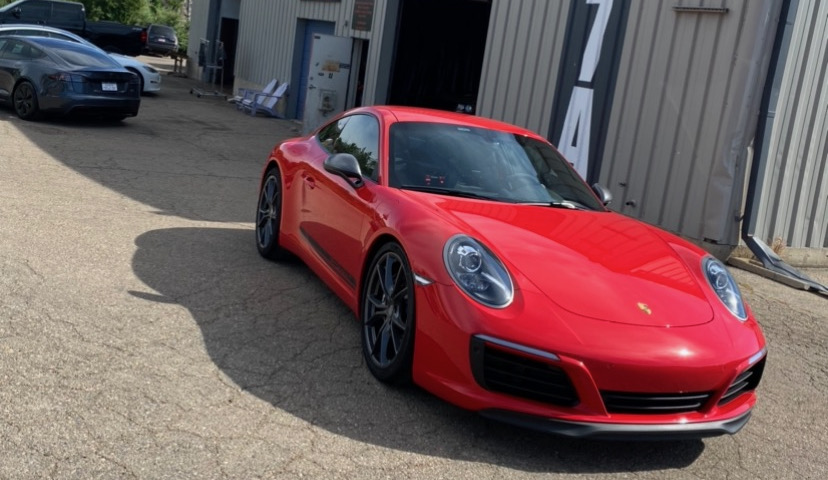In addition to offering a sense of privacy and adding to the beauty of the exterior of your vehicle; Window tint can also offer other advantages to your comfort and to the interior components of your vehicle by blocking harmful ultraviolet (UV) and heat causing Infrared (IR) radiation.
Ultraviolet Light:
Ultraviolet (UV) light is very high energy. In fact, it is just below X-Rays on the electromagnetic energy spectrum. The UV spectrum is broken down into UVA, UVB, and UVC energy bands, with UVC being the highest energy. Certain wavelengths of the UVC band react with oxygen molecules in the upper atmosphere creating what we refer to as the “ozone layer.” The ozone produced then filters out all of the remaining UVC, and most of the UVB. By the time the UV radiation from the sun reaches the earth’s surface, it is about 95% UVA and 5% UVB.
Fortunately, factory installed window glass absorbs nearly all of the remaining UVB, and about 60-70% of the UVA. So, it is the remaining 30-40% of UVA that finds its way into the vehicle that one needs to be concerned about. Even though this doesn’t sound like much, by way of comparison a broad-spectrum sunscreen lotion with a modest Sun Protection Factor (SPF) of only 15 blocks about 93% of UVA. Your vehicle windows that block about 60-70% of the UV would correspond to SPF of only about 1-2.
Although UVA is not considered to be as dangerous as UVB with regard to skin cancer, it does penetrate deeper into the second layer of skin (i.e., the dermis), where it can destroy elastin and collagen fibers, resulting in the premature aging of the skin.
Even though UVA is the least harmful (to humans) of all the UV light, it is still very high energy and can actually break molecular bonds, or cause molecular rearrangements through photochemical reactions. All of the plastic, foam, rubber, synthetic fabric, and vinyl in our vehicles are composed of long molecular chains called polymers. When these chains are broken down by UV light into smaller pieces, or when their structures are altered through photochemical reactions, the properties change and they become less resilient, and more brittle.
All the dyes used in the polymers, fabric or leather are already small molecules (as opposed to long chains), however, they are specifically designed to absorb light and are very efficient at soaking up UV light. Again, this causes molecular rearrangements and oxidation resulting in discoloration, or “sun-bleaching.”
Infrared Light:
Infrared radiation (IR) is the low energy electromatic radiation outside of the visible spectrum that our bodies sense as heat. Water molecules in the air and on the surface of our skin absorb this energy and causes the atoms start to vibrating, which we sense as heat.
Auto glass by itself blocks much of the IR Spectrum, but very little of the part of the spectrum that we sense as heat (near IR). Our KAVAKA Ceramic IR Window Tint can block up to 96% of this heat producing energy. This is referred to as Infrared Rejection (IRR, or simply IR). However, this by no means should lead you to believe that that your auto will be 96% cooler.
Visible light (VL) that enters your vehicle is also absorbed by all the materials in your vehicle (particularly the darker colors). These materials then become hotter and re-radiate that heat as IR radiation. In other words, minimizing the amount of visible light with a darker tint is also important if comfort without straining the AC is your main concern.
On the other hand, if darker tint makes you feel claustrophobic or not in full control of your vehicle and the surroundings, consider our KAVAKA Ceramic IR film with a VLT = 70. This film is virtually invisible, yet it still blocks 88% of the infrared and more than 99% of ultraviolet energy. The benefits of blocking IR energy is most noticeable when the sun is shining directly of your body.
Lastly it is important to note that the front window of your vehicle has its own unique properties. This window is made of safety glass, which is actually a layer of plastic film sandwiched between two layers of tempered glass. This film holds all of the glass fragments together in the event of breakage. The plastic film used in this process is polyvinyl butyral (PVB), which by way of coincidence rejects nearly all UV radiation.
